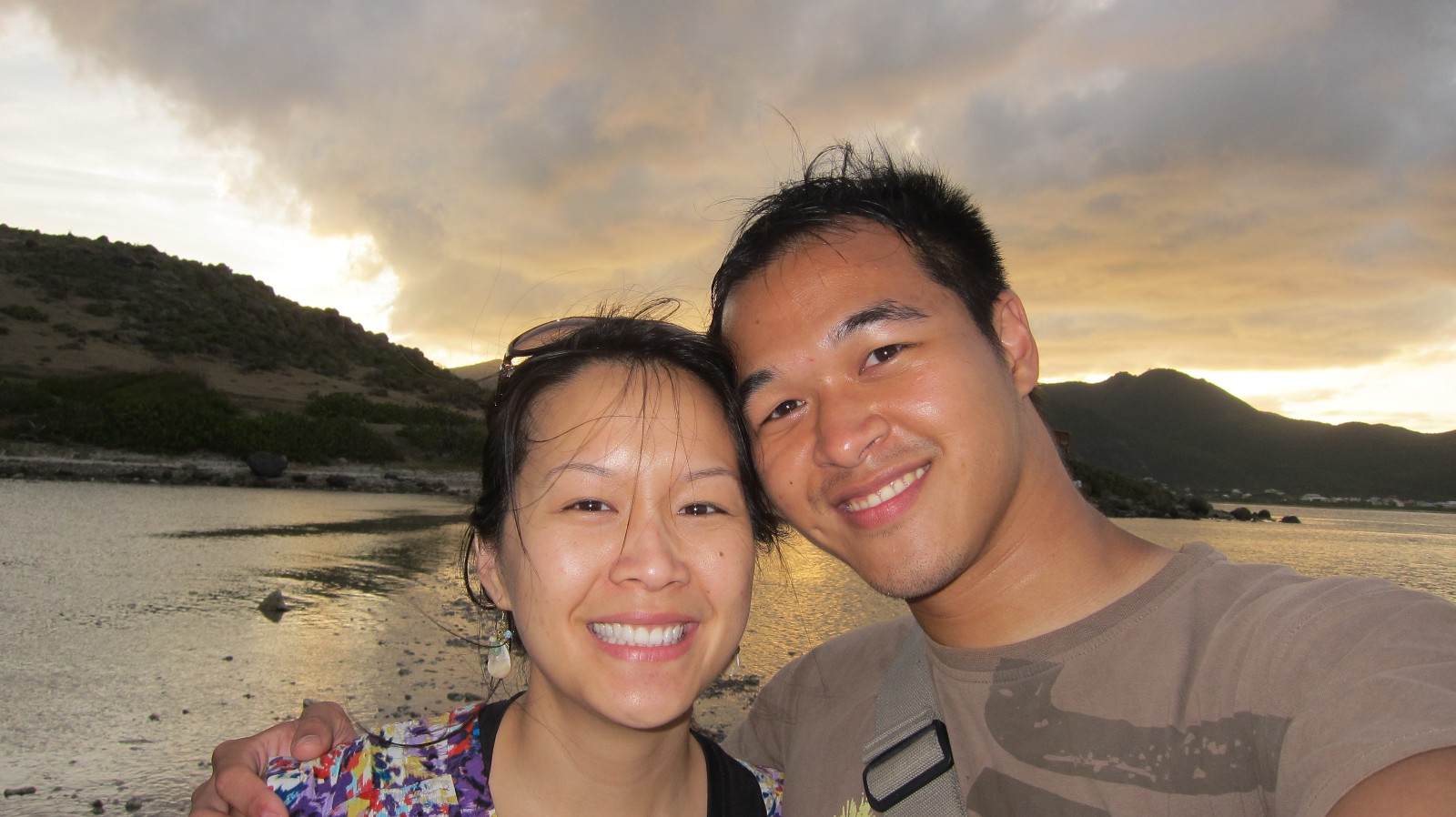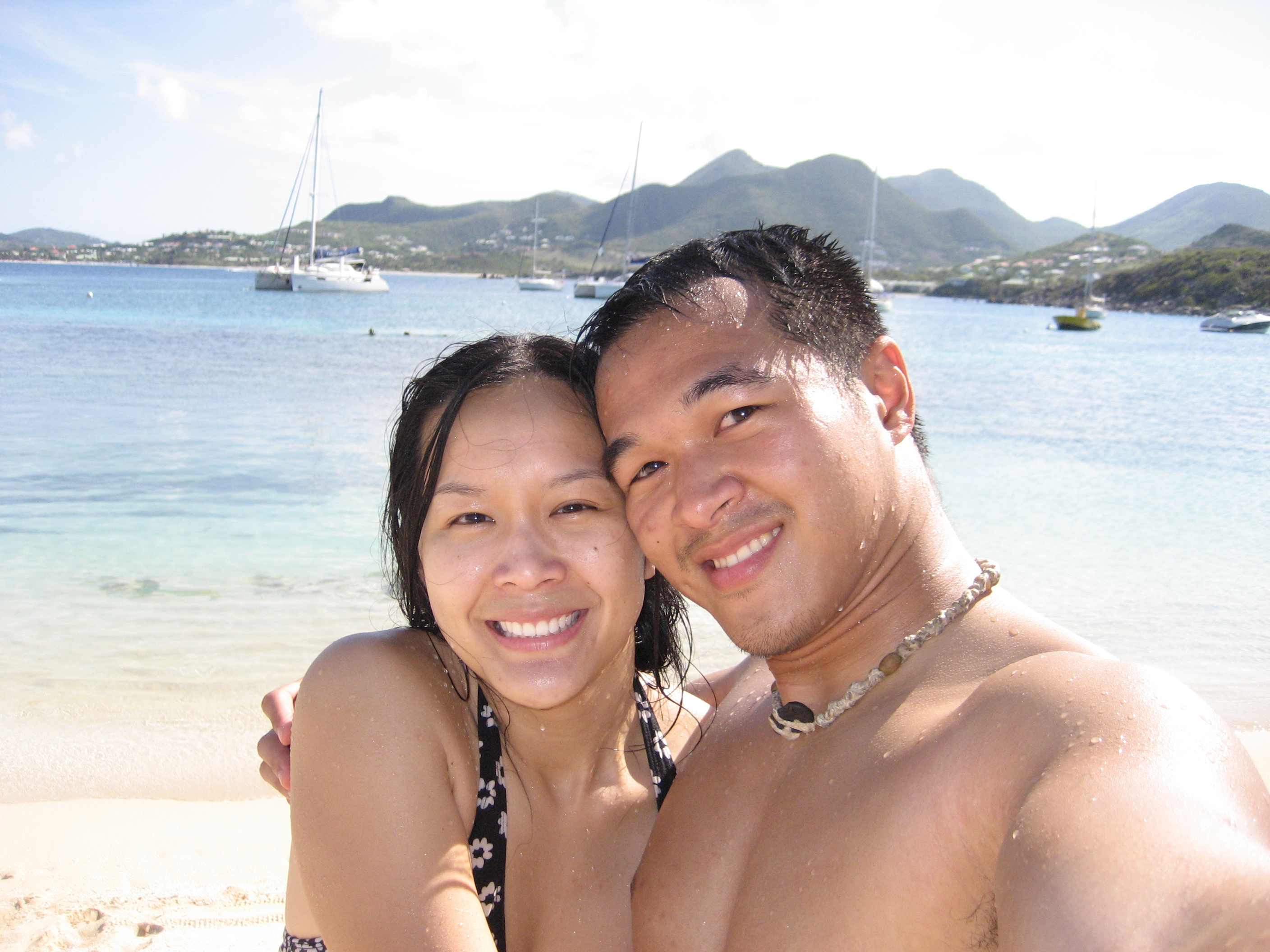Birthday Weekend in Iceland
I have always had a fascination with remote places, places far different from what I’m familiar with growing up in the warm Deep South. Perhaps that’s why I didn’t mind going all the way down to a tiny island in the middle of the ocean for medical school. To commemorate my 29th birthday, and to take a break from my surgery rotation in London, Irene booked a long weekend trip for the both of us to the exotic frozen paradise of Iceland, a place where ice meets fire, and a place where despite minimal resources and harshest of natural conditions, people somehow manage to survive and continue living, as their Viking ancestors had done for the past thousand years. Iceland had always found a spot on my bucket list for places to visit, and I’m glad this time we had the opportunity to experience it together.

While some people’s idea of a romantic getaway is to a pristine, remote island paradise, mine is too, except mine is in the arctic. To me, we were in one of the most remote corners of Earth, and I loved it. But looking from the Icelandic side of things, this land and people are hardly remote. Quite the opposite, actually. Nestled between the European and American continental plates, Iceland is the bridge between Europe and America, geologically speaking. And historically, it was the bridge between the Old and New World. Growing up in America, we were always taught that Christopher Columbus discovered the Americas for Europe (he actually discovered what he thought was “India” and hence called the Native Americans “Indians.”). But in the middle of Reykjavik, there stands a bronze statue of Leif Ericson, on which it proclaims “Leifr Eiricsson, Son of Iceland, Discoverer of Vinland, the United States of America to the people of Iceland…” in 930 AD, nearly half a millennium before Columbus. And it’s true. To the Icelanders, they were the ones who discovered the New World.

Iceland is a place where massive glaciers and icebergs meet towering volcanoes and miles of uninterrupted lava fields. Despite the harsh environment, people stay warm and happy, and find a habitable niche to make their home, like the moss that grows in the crevices of volcanic rock here. And despite the geographic isolation, people are tech-savvy and stay well-connected with the rest of the world. I guess in today’s world, no one can be truly isolated, unless you turn off your WiFi connection.

Irene and I had an amazing three days in Iceland. We stayed at a really cool hostel in Reykjavik called Kex, and took day trips by car to explore the southern and western parts of the island. Renting a car was a really good decision because it gave us the freedom to explore the country, and see things we never would have otherwise. If you ever go to the UK for a clinical rotation and want to take a long weekend trip out of the country, I highly recommend Iceland. Here, I’d like to share some of the highlights from our trip.

Some Highlights:
Blue Lagoon
The first thing Irene and I wanted to do after getting off the plane was to soak in one of Iceland’s most famous hot spots, literally. Heated naturally by mother nature, the Blue Lagoon is a volcanic thermal spring that gets its name thanks to the minerals that make it blue. Bathing in the warm waters of the Blue Lagoon was an awesome, relaxing experience, and we easily spent a few hours here despite it being otherwise freezing cold outside. But you forget that when you’re here.




Dramatic Landscapes
Geologically speaking, Iceland is relatively young, and you can tell by the bare, jagged landscape, which hasn’t worn off much with time. There are parts of the island that are literally still growing, with volcanoes spewing lava into the ocean, creating new land, which hasn’t had time for plants to grow on it yet. I’d highly recommend renting a car to drive around this island, particularly the southern coast, where you’ll pass by miles and miles of gritty volcanic landscapes, huge glaciers, steep cliffs, dramatic mountains, waterfalls, black-sand beaches, quaint villages, galloping herds of wild Icelandic horses, and lakes filled with icebergs. We often found ourselves the only car (or human beings, or living things for that matter) for miles, which was awesome, and we felt we had the entire island for ourselves.

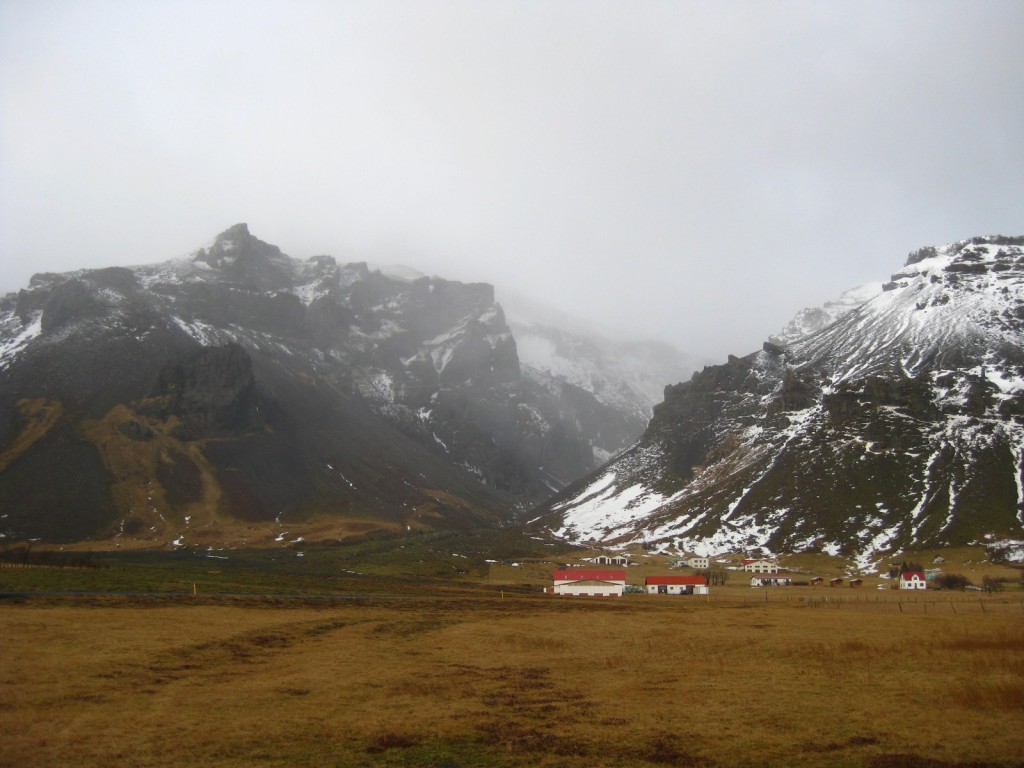


Waterfalls
Iceland has some beautiful waterfalls. If you drive along the southern coast, I’d recommend stopping by Seljalandsfoss and Skogafoss. You’ll see it right off the road. If you are driving more inland, Gulfoss is a must! If you are up north, you must check out Dettifoss, the most powerful waterfall in Europe in terms of water volume. All the waterfalls, geysers, national parks, and other natural sites are free to see in Iceland.
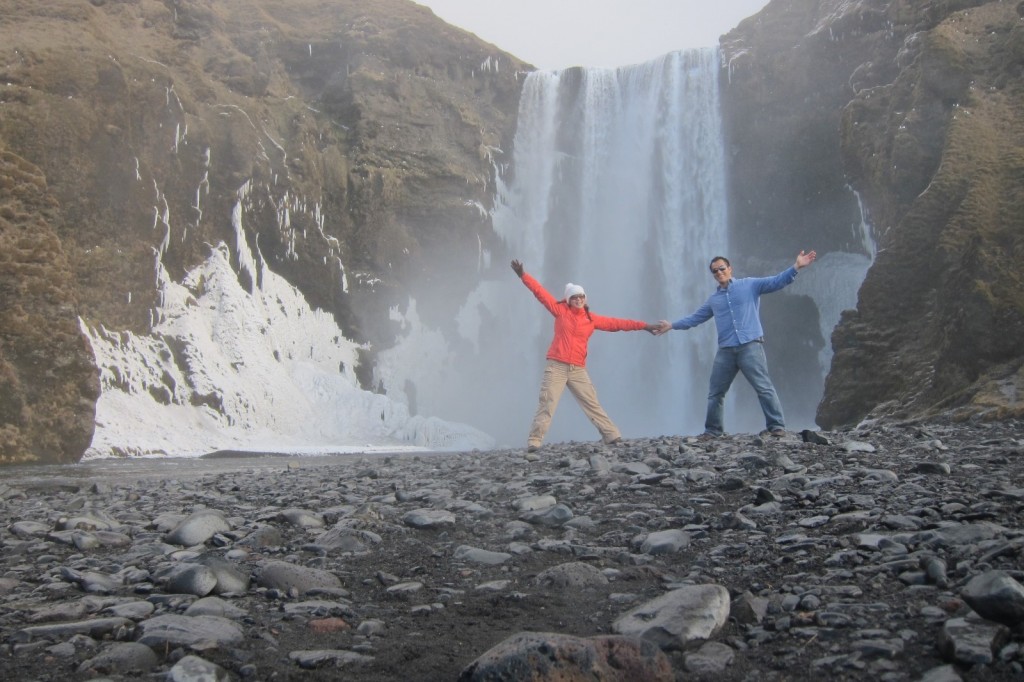



Icelandic Horses
Drive anywhere outside of Reykjavik and you will see herds of Icelandic horses, direct descendants of the horses brought over by the Viking over a thousand years ago. No horses are allowed off Iceland and no horses are allowed in. Because of this, the horses in Iceland today are very pure. They are small, with long hair, and are extremely friendly to people. Irene and I loved stopping by the side of the road to pet them.


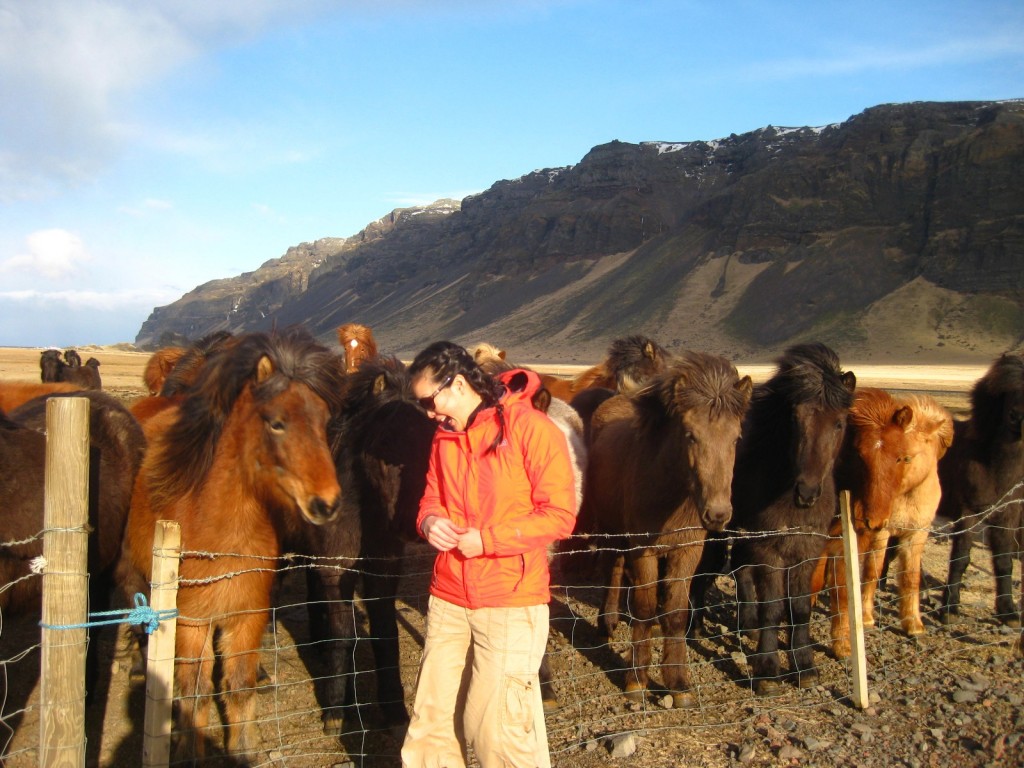
Hiking on a Glacier
Europe’s largest glaciers and ice caps are found in Iceland (if you consider Iceland part of Europe). Irene and I got to hike on Svínafellsjökull Glacier. Amazing experience, and the landscape, or shall I say icescape, was nothing like we’ve ever seen before. Did you know the deeper the ice is, the bluer it is? I would highly recommend getting a guide because glacier hiking can be dangerous, especially with crevices that are hidden under loose snow.




Icelandic Cuisine
Iceland is perfect for the culinary explorer and brave eater, and Irene and I were up for a challenge. With little natural resources, Icelanders had to be creative to make sure they had enough to eat. What ends up happening is a cuisine that values sheep heads, whale steak, horse meat, raw smoked puffin, and hakarl, the infamous raw shark that goes through a many-month process of fermentation to detox it from its natural poisons. Of course, Irene and I had to try it, and despite it being the most putrid thing we’ve ever put in our mouths, we vowed to continue eating it until we figured out why people liked it. We never figured it out, nor did we finish it. That was a first.




Geysers
The word “geyser” (with an “e”) comes from Geysir, Iceland (with an “i”), one of the few places in the world where you can truly be amazed by these natural fountains of steam and water. At Geysir, there are several geysers, the most famous of which is Strokkur Geyser, which launches 20 meters of water and steam up into the air every 5 minutes or so. The original Geysir is a few steps away, but it has laid dormant for the past few decades.




Northern Lights
The aurora borealis was one of the biggest reasons why we wanted to come to Iceland. While it is best seen during the winter months, it can be seen throughout the year. For our first night in Iceland, we drove out to Thingvellir national park, turned off our lights, and waited. For hours, we waited and did not see anything. We did not see anything our second night either. On our final night in Iceland, we were determined to try again, and drove to the outskirts of Reykjavik by the lighthouse. At that moment, a faint streak of light started to appear in the clear night sky. “I think that’s just a cloud Benji,” said Irene. “But it wasn’t there before… it just appeared all of a sudden,” I responded. Irene took out her camera and set the shutter speed to 5 seconds. The picture preview showed a green haze. “That’s it!” We realized what it was. Within a few minutes, that streak of haze grew brighter and brighter, and bigger, until it became a radiating curtain of streaming green, white, and pink lights, snaking across the sky. We stared at the sky as the show lasted for the next hour. What a hauntingly beautiful phenomenon of nature.




